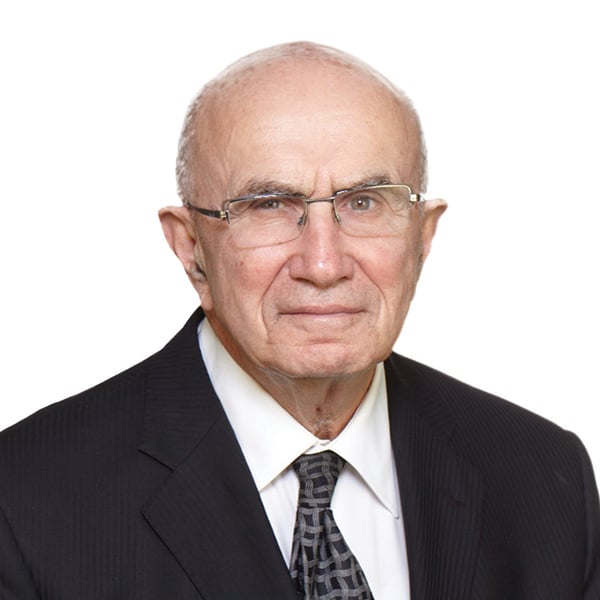It still comes down to showing up early and often

I was called to the bar in 1960. Witnessing the explosion of marketing by younger members of the profession, especially litigators, on social media and elsewhere, combined with the ubiquitous phenomena of dedicated marketing professionals in firms large and small, caused me to reflect on how my generation of counsel developed a reputation and following in an age where lawyer advertising was a disciplinary offence, social media, the internet, texting and emails had yet to be invented and “cc” literally meant “carbon copy.”
The legal organizations that existed in those days were the LSUC, CBA, OBA and local law associations and, in 1963, The Advocates’ Society. “Networking” meant switching TV channels between CBC, CBS, ABC and NBC.
None of us specialized, with a few exceptions, such as those who did only insurance defence work. Marketing for them consisted of taking an insurance adjuster out to lunch with the expectation, usually requited, that a new file would come in return.
The rest of us operated daily in the criminal, civil and family courts. We were in one court or another, or motions court, virtually every day, often in more than one court or discovery on any given day.
Seniority was the rule in magistrates and motions courts (masters and weekly), so CLE consisted of listening to the arguments of more senior lawyers and seeing what worked (and what did not). Formal CLE programs by the legal organizations were primarily once a year, though some local bar associations had more frequent programs.
We made our reputations by hard slogging in the courts. Production and discovery were nothing like today. Trials were short, and we tried many more cases than trial counsel do today. Reported cases were important. Everyone in those days read the weekly edition of the ORs, DLRs and SCRs when they came out and always noted who was counsel. Some wrote books (Sopinka and Lederman on evidence, Ronald Rolls on civil procedure and Martin Wunder on personal injury trial practice). Some, like Ian Binnie, took a high-profile stint with the Federal Ministry of the Attorney General.
Some of us developed a reputation in the Ontario Court of Appeal, where, in the 1960s, many of the appellate judges were good lawyers but flawed human beings, such that many lawyers never returned after one experience there, creating referrals for those of us who could and did take the abuse and make our arguments. Doug Laidlaw, Ian Scott, John Sopinka, Claude Thomson, myself, and others were the beneficiaries of these referrals, and of course, we appealed almost every case we lost.
We all looked for opportunities to stand out. Many came by chance. In my case, being retained as co-trial counsel, by my cousin Martin Wunder, in Teno v. Arnold resulted in a 1974 personal injury award of $950,000, primarily upheld in 1978 by the Supreme Court of Canada (one of the “trilogy”), got much traction. Similarly, being appointed by Justice Donald Morand in 1974 as commission counsel in an inquiry into abuses by the Metropolitan Toronto Police, a retainer which lasted two years, got me much publicity and exposure to Toronto counsel. I had appeared before Donald Morand several times but did not know him otherwise, though he was from Windsor, as was I. Another retainer came in the mid-80s from Regional Senior Justice Richard Trainor to act for his good friend Ron Joyce in an action by Lori Horton, Tim Horton’s widow, for 50 percent of the Tim Horton franchise. I had appeared before Justice Trainor several times but had no personal relationship with him before the phone call asking me to consider the retainer.
None of us “missed an opportunity to take an opportunity,” to paraphrase former Israeli Foreign Minister Abba Eban. We accepted every invitation to speak in the burgeoning CLE market. An invitation to become a director of The Advocates’ Society was a steppingstone, and it led to the presidency for several of us, including Wendell Wigle, Joe O’Brien, Ted Rachlin, my partner Mary Anne Sanderson, Marg Ross, Eleanore Cronk, myself and others. We sat on every committee offered to us, and many of us were sessional professors at law schools.
The junior litigation bar was much smaller in those days. Most of us knew and liked each other, and we socialized. Referrals were common. Many important retainers came from relationships we made along the way. The word “conflicts” did not enter the legal lexicon until the 1980s. In my case, I became friends with a young lawyer on the other side of a medical negligence case in the mid-1970s. Many years later, after many interactions, that friendship ultimately led to a significant retainer for my firm. In another, a young lawyer in a major firm bested me in a weekly court motion over pet treats between competing pet food suppliers, and we became friends. That relationship ultimately led to significant referrals, including a 130-day trial in a banking dispute.
None of this is in any way to denigrate or downplay the efforts of current-day marketing through firm advertising, networking, social media, blogging and taking an active part in the plethora of current legal organizations. However, some current advertising, aggrandizing and self-promotion seem beyond the pale of what is appropriate. I have nothing but admiration for the marketing staff at my firm and others I have dealt with. They come up with valuable ideas and programs I would never have considered.
Woody Allen was famously quoted as saying, “Ninety percent of success is showing up.” Yogi Berra would have added, “The other fifty percent doesn’t count.”
My father was a retail merchant and wrote his advertising copy. He said, “Only 50 percent of it worked, but I never knew which 50 percent.” The same may be said for current marketing practices. There is a time for sitting on the couch and watching sports or Netflix, but nothing good happens while you do this. Showing up early and often, to me, is still the best advice.











